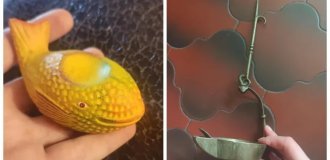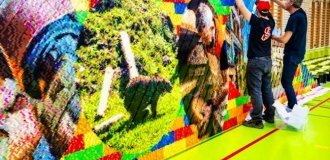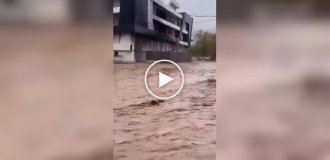Predatory island from "Life of Pi" and its possible prototype (6 photos)
A piece of land located in the Pacific Ocean, which attracted the main character, was not so harmless. Wakes up here at night voracious appetite: plants on the island are not averse to feasting on tender rays of the sun, but fresh ... meat. 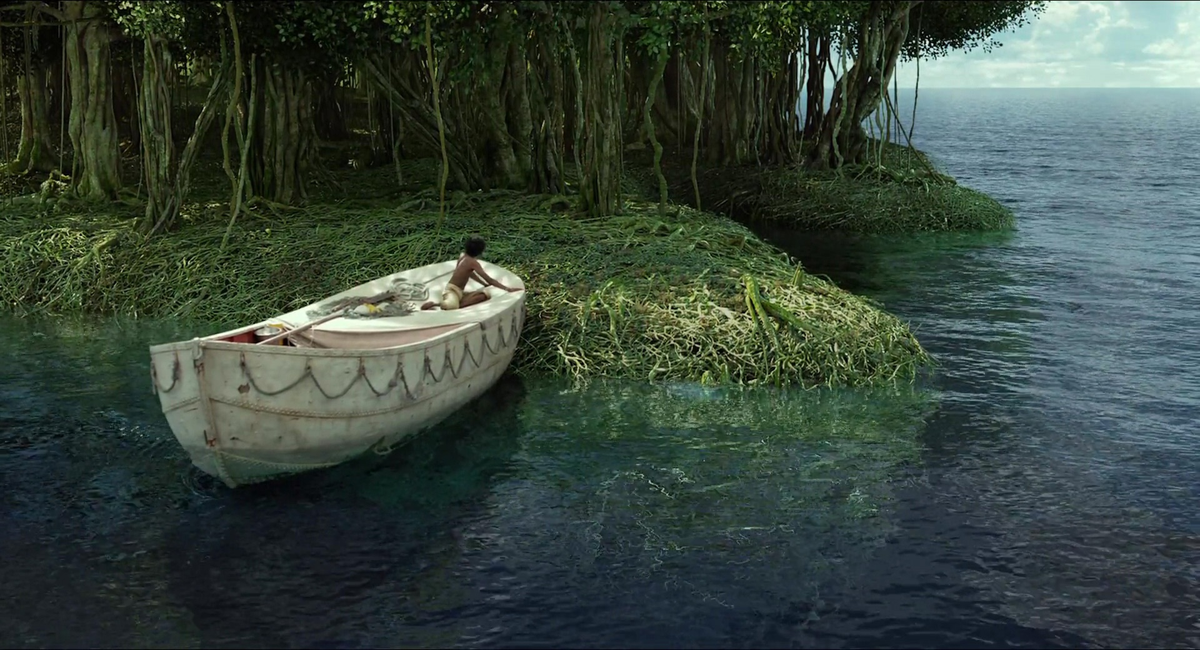
The coast of the predatory island from "Life of Pi"
The author of the book, Yann Martel, depicted the island as a piece of paradise, which thrives and teems with life during the day, but the night on it is real hell: a kind of trap for living beings. Island from Life Pi "consisted of special algae that are able to release acid (like hydrochloric acid in the human stomach). Gaping animal instantly digested, absorbed by algae. The way to survive on there is an island: it is worth climbing higher. The only adapted the animals here are nimble meerkats that found shelter in the crowns at night trees. The main character escaped from bloodthirsty algae like manner. 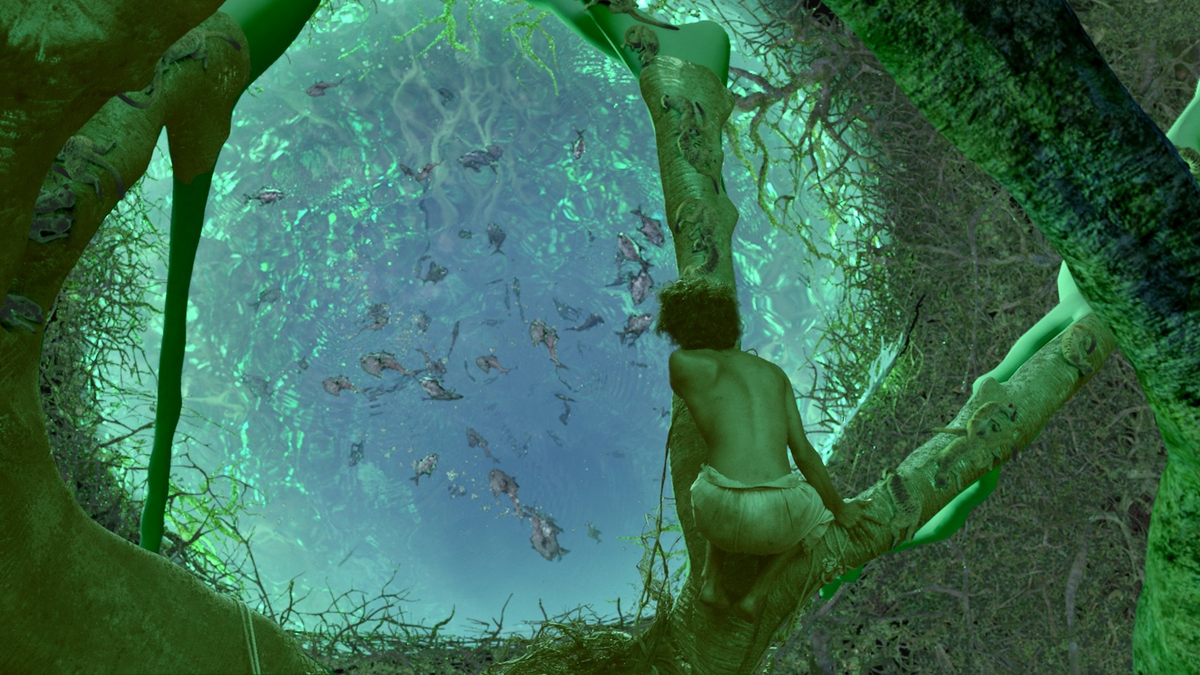
"Dinner" of the island
It is worth mentioning separately the interesting shape of the hungry island, which resembles the image of the famous Hindu god Vishnu: two pairs hands, head crowned with a crown. Vishnu is usually depicted with additional attributes: tender lotus flower, heavy mace, shell and weapon - acre, spinning in the hand (rather even on the finger) fire disk. Such an analogy was made by the main character. But is there on the map world such a dangerous island with interesting outlines? 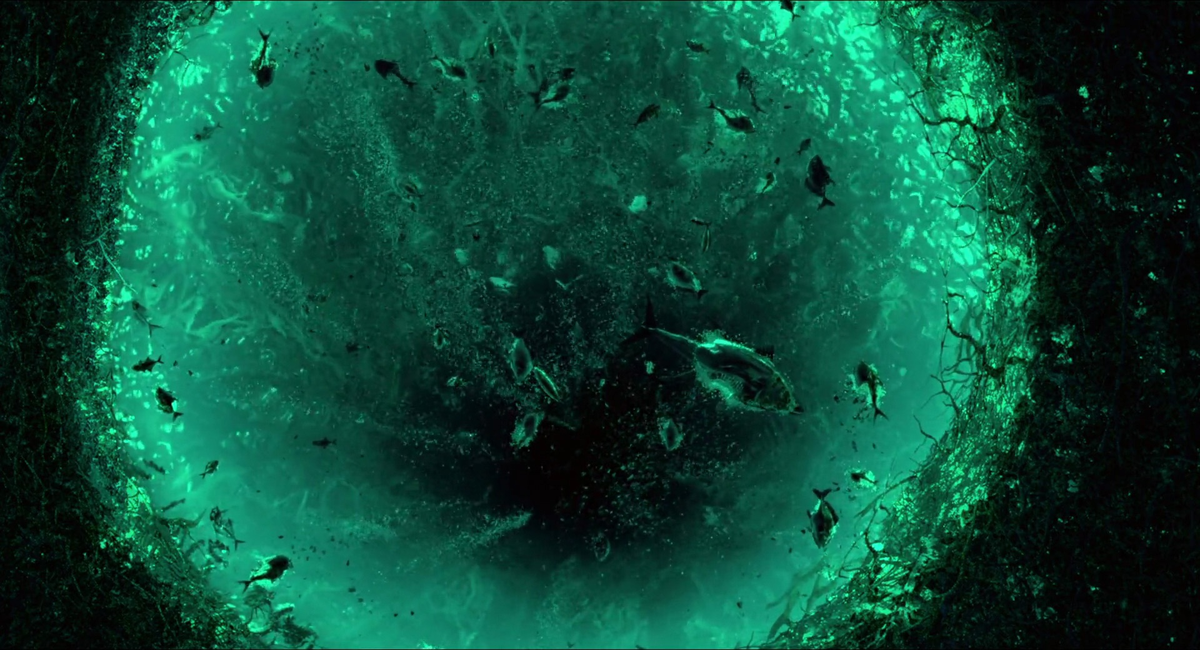
This is how they depicted the process of digestion by the island of "prey"
In fact, the carnivorous island is a figment of the writer's imagination. But, as they say, a fairy tale is a lie, but there is a hint in it. In nature there is unusual phenomenon: red tides. It is explained by the excess reproduction of algae, in particular marine: dinoflagellates and diatoms. 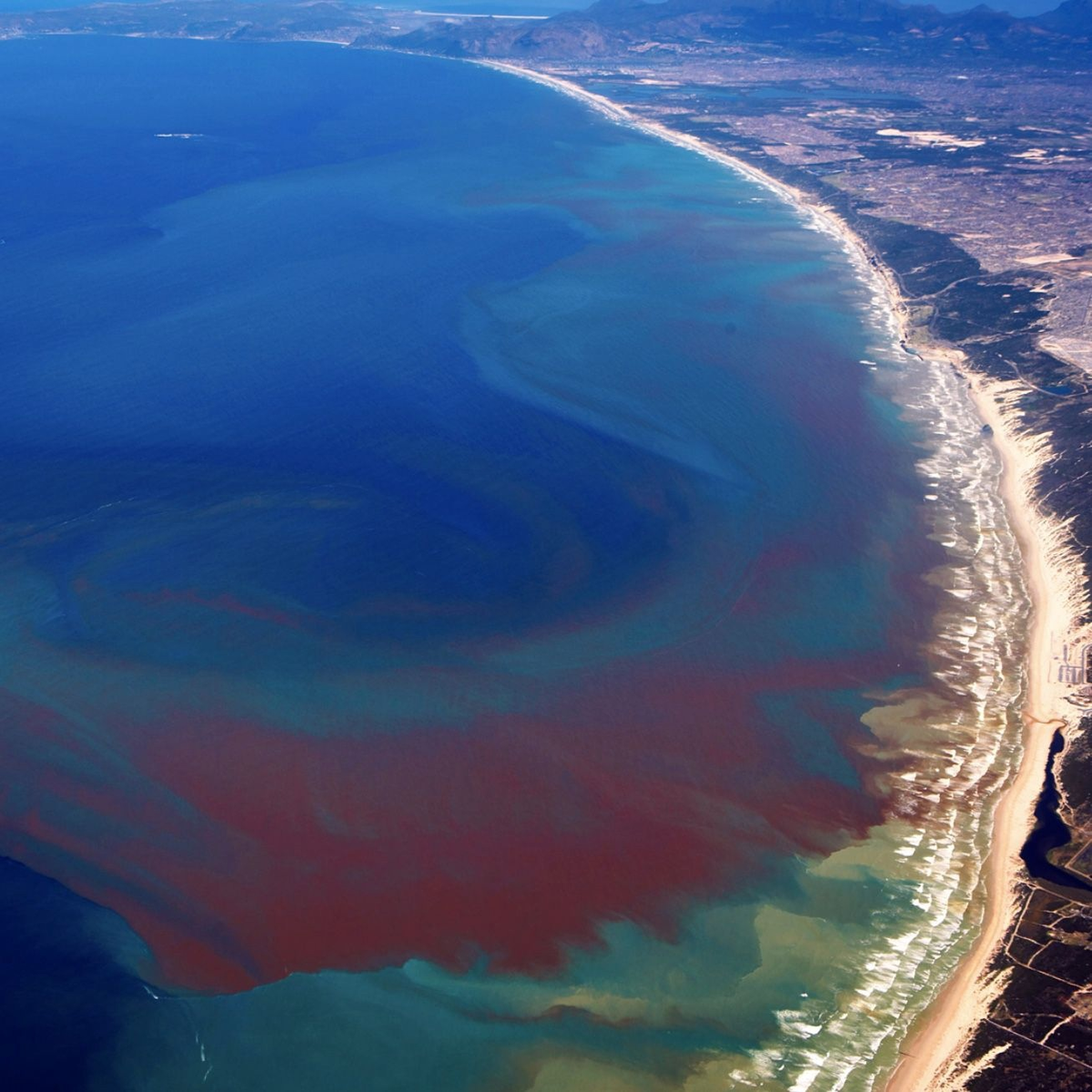
red tide
Everything would be fine, but seemingly harmless microorganisms secrete specific toxins that in high concentrations poison others organisms. There are cases not only of poisoning of animals, but also of people, eating, for example, mussels from the red tide zone. Looks interesting a unique spectacle of reddish-brown coloring of water inevitably harms the flora and fauna of the seas. When the red tide zones cover a large area for a long time, local fish and plants die. 
The tide on the shore
Causes water blooms can be both natural - due to the resulting difference in speed and direction of flow in different layers of sea water plants begin to multiply actively in a narrowly limited space in a certain time of the year - and artificial: industrial pollution, unsustainable human agriculture or changing of the climate. 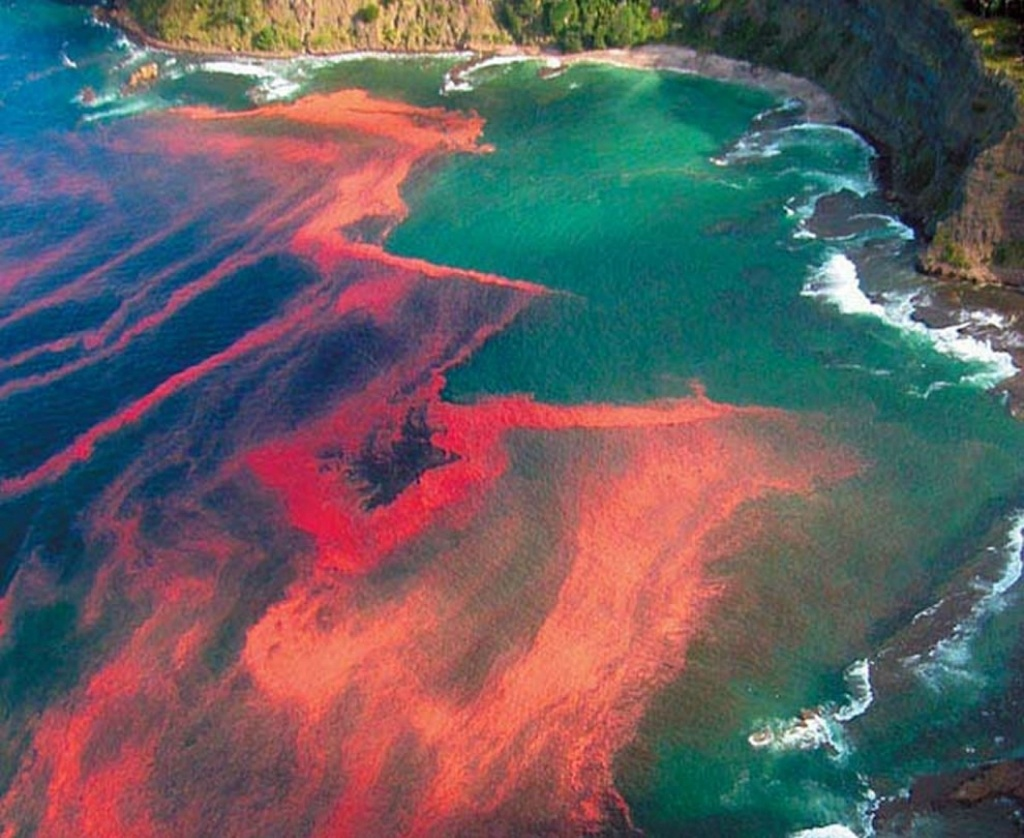
Red tides covering large areas
Finding the coordinates of the predatory island from Life of Pi will not work. Although, who knows, perhaps someday on the planet, but probably not with us, such a unique island may appear: nature does not ceases to amaze us, and sometimes frighten us with its miracles. But now only planktonic unicellular algae behave in this way, unwittingly spoiling the hydrosphere to their other neighbors who accidentally find themselves in the same part of the vast ocean. Maybe it was the red tides that inspired writer on the image of dangerous plants from Life of Pi, what do you think?
